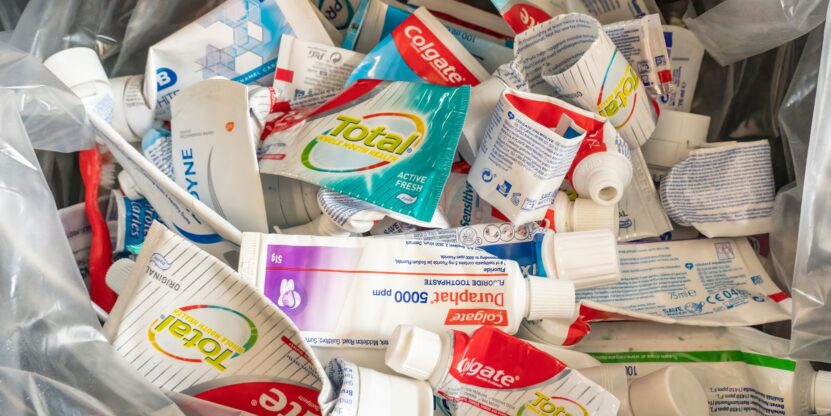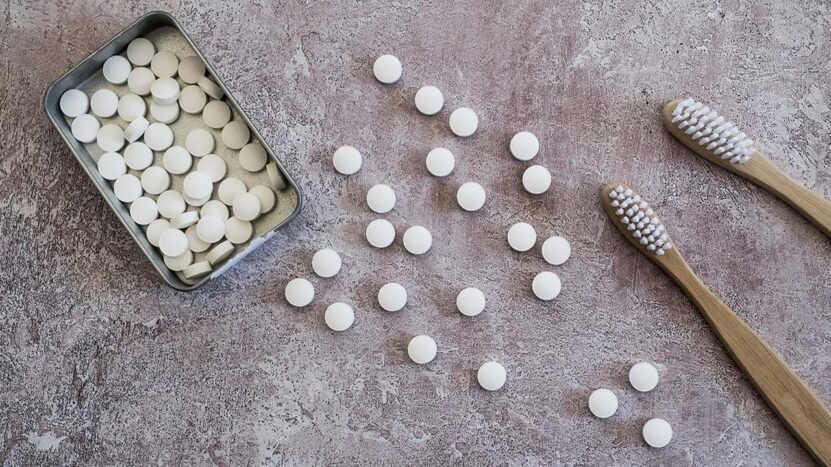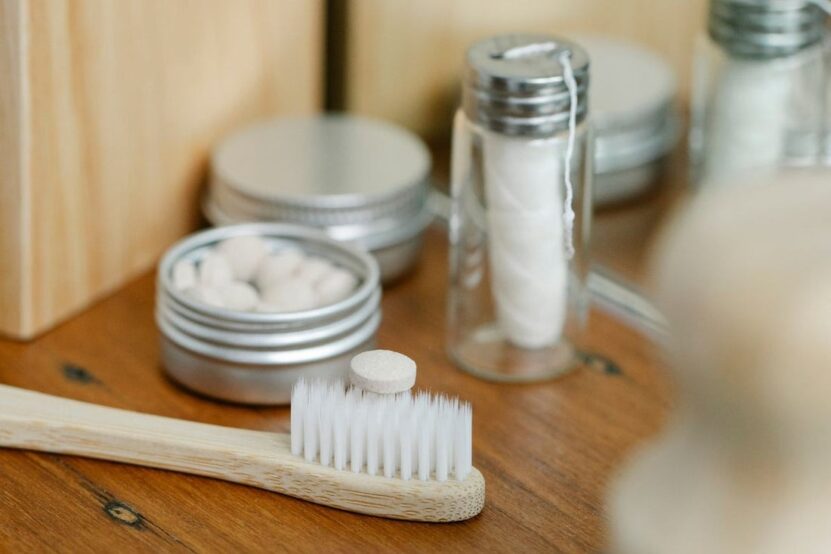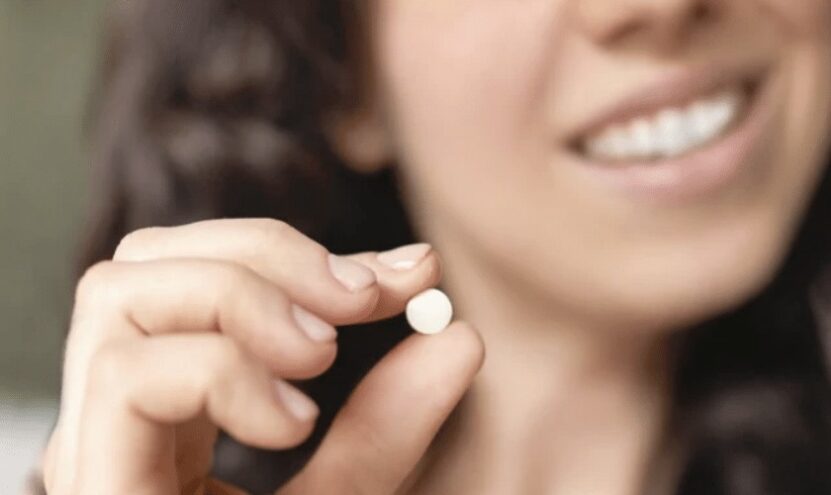Getting ready in the morning is all about speed. We rush to shower, shave, brush our teeth, grab coffee, and race out the door, hopefully on time. But what if a simple switch in just one step of a daily routine could save time while also contributing to sustainability? Toothpaste tablets promise to do both by providing fast dental care minus plastic waste from traditional tubes.
These tiny, compressed pucks of tooth-cleaning ingredients are popping up more in American bathrooms as people seek greener solutions. Chew, brush with some water, and go; the people at Ecofam explain that it’s that quick and easy. Good daily oral hygiene like this is not just about fresh breath—it also helps prevent serious issues like gum disease or the need for dental implants later in life.
Plastic Waste Pains

Nearly every American household uses traditional toothpaste in squeezable plastic tubes. While convenient and familiar, these tubes come with an environmental cost that’s often overlooked. Most are made of mixed materials—plastic layers combined with aluminum—making them extremely difficult to recycle.
Here are some key points highlighting the problem:
- Billions of tubes discarded annually: Over 1.5 billion toothpaste tubes are thrown away each year globally, with a significant portion coming from the U.S. alone.
- Non-recyclable materials: The multi-layered structure of most tubes makes them incompatible with standard recycling systems.
- Long degradation time: A single tube of toothpaste can take up to 500 years to fully decompose in a landfill.
- Hidden costs of convenience: Even though tubes are easy to use, their environmental cost is high—contributing to both land and ocean plastic pollution.
- Limited recycling efforts: While a few brands have introduced recyclable tubes, adoption remains low, and many consumers don’t have access to proper recycling facilities.
This mounting plastic waste crisis is what pushes many eco-conscious individuals to reconsider their daily habits—starting with the small yet impactful choice of switching to toothpaste tablets.
Chew and Foam

This plastic waste dilemma has led eco-conscious buyers to try toothpaste tablets instead. Tablets provide the main oral care agents like fluoride and silica grit, just in small, compressed pieces free of packaging. Leading toothpaste tablet companies sell their products loose in glass jars and refillable tins.
Consumers simply pop one tablet into their mouth, chomp down to break it into pieces, wet their toothbrush, then brush the foaming paste over teeth. The fizzy tablets clean while their minty flavors leave mouths feeling refreshed in under two minutes.
After a tablet gets chewed and brushed away as foam down the drain, nothing gets left behind to toss out. This satisfying simplicity attracts eco-minded shoppers to switch old habits and lower their plastic brushing footprint.
Sustainable Appeal

Eliminating plastic waste offers the most obvious perk of toothpaste tablets, but their appeal stretches beyond just cutting down tubes. Portability also attracts fans since the tin cases slip easily into gym bags, suitcases, work totes, and lockers without leaks or bulk.
Campers, hikers, and travelers love stashing just enough tabs for each day instead of packing hefty tubes. Customizable tastes also draw users as some brands offer tablets in a rainbow of flavors from citrus to chocolate mint, even seasonal limited editions. Those wanting to control the strength and tastes of their toothpaste find tablets more flexible than relying on store shelves.
To better understand why many consumers are making the switch, here’s a side-by-side look at how tablets compare to traditional toothpaste:
| Feature | Toothpaste Tablets | Traditional Toothpaste Tubes |
| Packaging | Refillable glass jars or metal tins | Multi-layered plastic/aluminum tubes |
| Portability | Lightweight and leak-proof | Can burst or leak in bags |
| Waste | Minimal or zero waste | Non-recyclable, ends up in landfills |
| Travel-friendliness | TSA-compliant, easy to portion | Subject to liquid restrictions |
| Flavor Variety | Broad range, often customizable | Limited to mass-market flavors |
| Shelf Life | Long, doesn’t dry out | Can harden or separate over time |
| Usage Control | Single-serving consistency | Hard to measure exact portion |
This practical comparison highlights why toothpaste tablets resonate with travelers, minimalists, and anyone aiming to reduce their environmental footprint without sacrificing convenience or effectiveness.
Oral Care Disruption
Toothpaste tablets may never completely displace familiar tubes from sinks everywhere. But as environmental worries bubble up more into everyday purchase decisions, tablets could chip away at tube dominance. Oral care has looked roughly the same with its squirty pastes and blaringly bright packaging for decades.
Now, with millions of dollars pouring into the eco-friendly product space, eco-friendly toothpaste tablets have emerged as leaders despite being outliers. Analysts estimate the global market for toothpaste tablets to expand in the next several years as shoppers keep demanding sustainable swaps. While niche now, toothpaste tablets seem poised to gradually shift how consumers approach maintaining clean, healthy smiles.
Consumer Shifts and Challenges Ahead

Toothpaste tablets are growing in popularity, but they still face some challenges before becoming truly mainstream.
The biggest obstacle? Habit. Most people are simply used to squeezing paste from a tube—it’s familiar, quick, and doesn’t require thinking twice. Chewing a tablet before brushing can feel strange at first, especially for those who’ve used traditional toothpaste their entire lives.
Another common concern is cost. Tablets often come with a higher upfront price, especially compared to the low-cost tubes found in most stores. For budget-conscious shoppers, that can be a deal-breaker, even if the tablets last longer in the long run.
Awareness also plays a role. Many consumers still haven’t heard of toothpaste tablets or don’t know how they work. That hesitation often comes from questions about effectiveness, flavor, or safety.
To counter these concerns, brands are stepping up with:
- Sample packs and smaller trial tins
- Instructional videos showing how to use them
- More flavor options and formulas, including fluoride and fluoride-free versions
As people continue to care more about the environment and simple routines that travel well, toothpaste tablets are slowly but surely brushing their way into more homes.
Conclusion
For the eco-conscious speed demons among us, toothpaste tablets offer a timesaving, plastic-saving oral care alternative. Their compact portability and less wasteful footprint appeal to minimalists and frequent travelers, too.
Custom options to flavor, strengthen, and personalize also attract fans. With an increasing awareness of environmental impact and a continued commitment to oral hygiene, Americans are finding that toothpaste tablets offer a convenient and eco-friendly alternative to traditional toothpaste. A quick chew, short brush, and tablets make it possible to go green while on the go.

